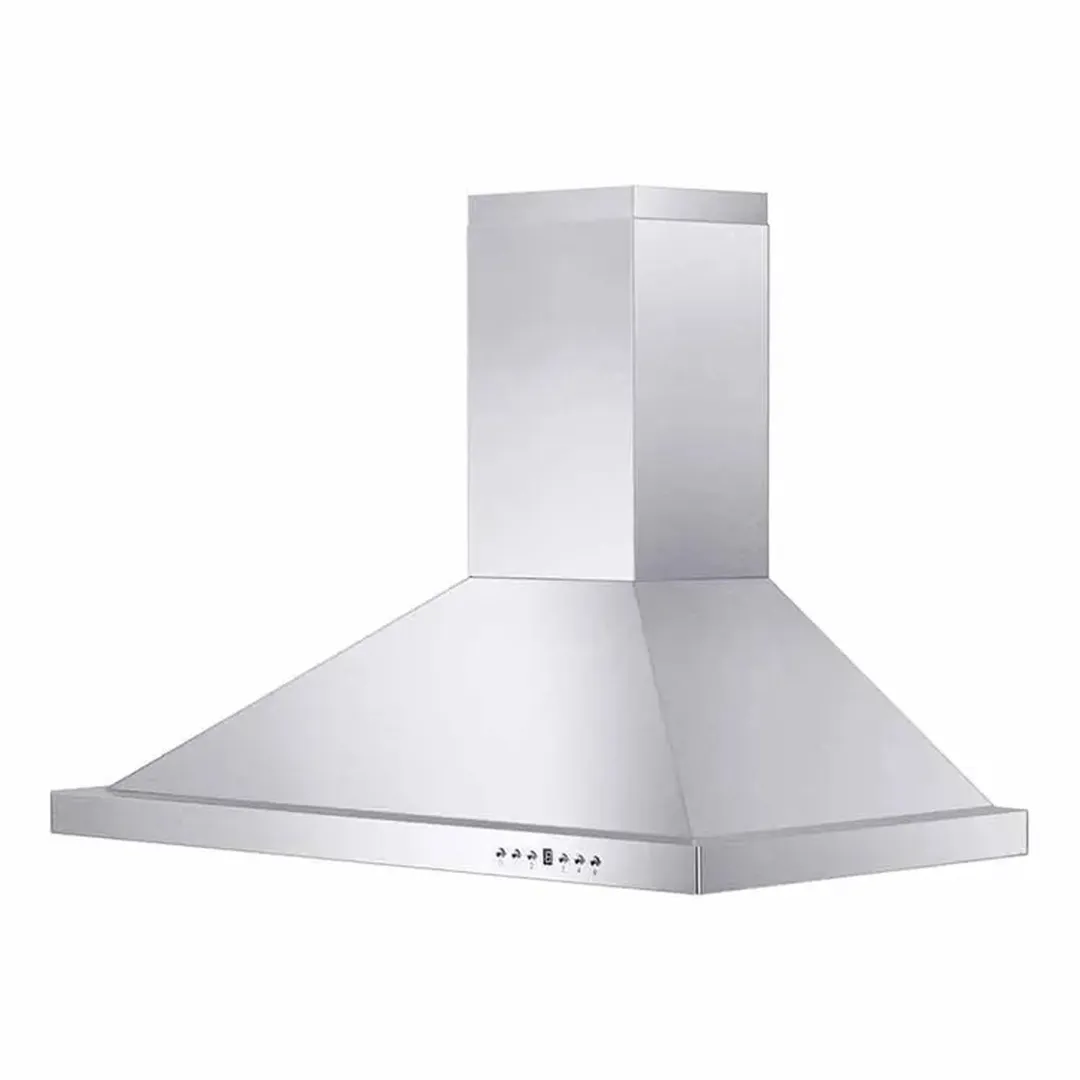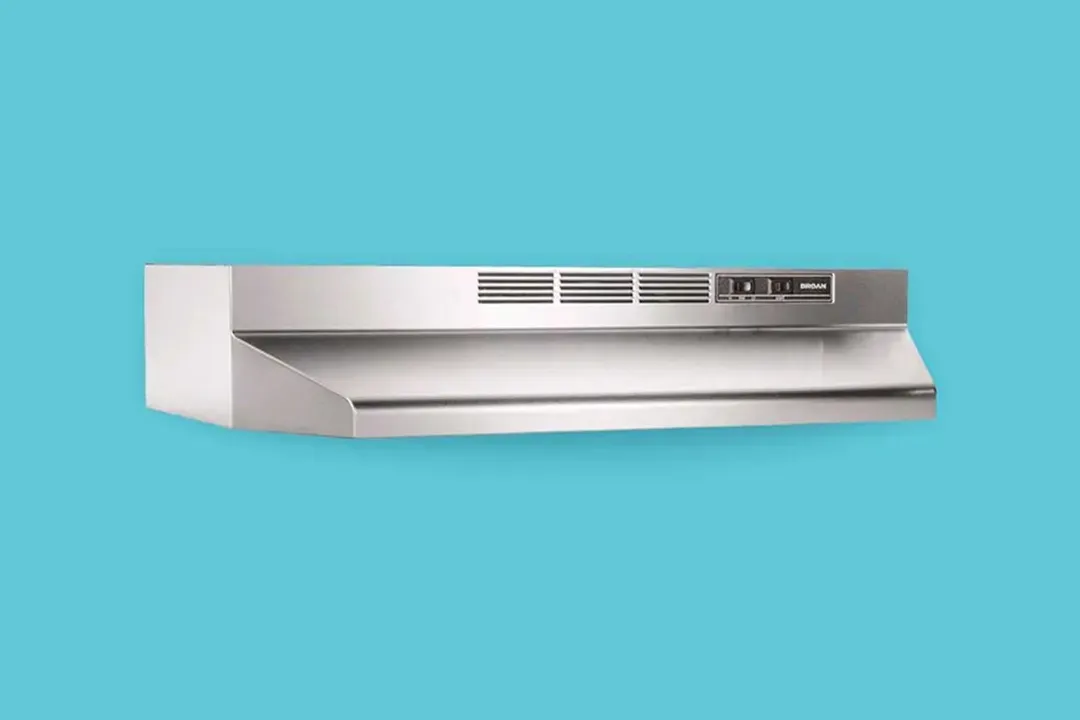Best Wall-Mount Range Hoods in 2024 The Ultimate Buying Guide & Reviews
If you’re planning to upgrade your kitchen with new ventilation, here are the best wall-mount range hoods for your consideration.
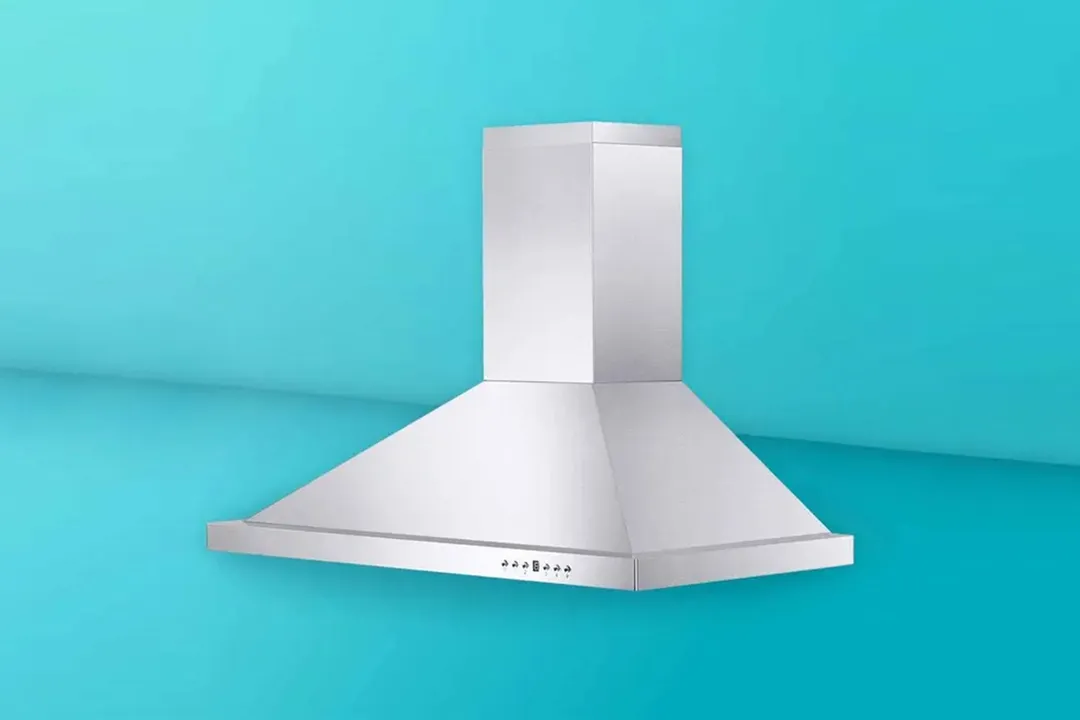
If you cook on a gas stovetop, it is imperative that you have a good range hood to keep you safe. The cocktail of hazardous gases emitted from a gas stove can be very harmful if unfiltered or unvented.
In case you’re unaware, that’s exactly what a range hood can help you with. Designed specifically to draw unwanted gasses out of your kitchen, it will make your cooking area a healthier, more comfortable space to be in.
If you’re looking to install one, you can find an overview of all the best wall-mount range hoods here.
Reviews of the Best Wall-Mount Range Hoods in 2024
Now that we’ve covered the background info, here are all of the best wall-mount range hoods we found this year.
1. Best Overall: Z Line KB Wall-Mount Range Hood
The Z Line KB wall-mount range hood is notable for its adaptability. It is available in four different sizes, so you can tailor it to snugly fit your cooking range. The Z Line KB range hood also runs at four different fan speeds, giving you more control over the ventilation throughput.
- High performance
- Convertible design
- Multiple sizes
- Stainless steel construction
- Digital control panel
- Costly
- Aluminum filters aren’t durable
Not only that, but its convertible design makes it an appealing range hood regardless of whether you prefer ducted or ductless styles. And as a small aside, Z Line products have made appearances on popular cooking shows like Top Chef.

High Ventilation Strength
One of the best features of this unit is that the ventilation strength is variable. The speed of the blowing fan inside can be controlled via the small control panel at the front of the range hood.
You can select from four fan speeds in total. Respectively, they will have a measured air speed of 280, 400, 580, and 760 CFM.
At the highest fan speed, the Z Line KB range hood can handle up to a 76,000-BTU cooking range. This equates to about five burners working simultaneously. However, when you’re working with just a single burner, you can use the lower speeds to save energy.
The speed to use will also depend on the recipe you’re preparing. Z Line recommends the lower speeds (between 1 and 2) for light frying and boiling. The third speed is ideal for heavy frying or boiling. Only resort to the last speed if several burners are working at once or you’re using the stovetop for some heavy grilling.
Convertible
If you want, you can also operate this range hood as a convertible by purchasing Z Line’s optional charcoal filters. Once the filter is in place, you’ll be free to switch to recirculation mode any time you wish.
Professional Fit
The Z Line KB series, like we mentioned earlier, are available in four sizes: 30, 36, 42 and 48 inches. You can tailor the range hood according to the size of your cooking range.
Most residential users will only ever need the 30 or 36-inch sizes. The larger 42 and 48-inch variants are mostly used in commercial kitchens.
Aluminum Baffle Filters
This range hood comes standard with aluminum baffle filters to trap grease and other contaminants in the air. They work reasonably well. Even at the highest cooking capacity, the filters will be able to take out most of the grease lingering in the vented air flow.
Unfortunately, since they are made from aluminum, cleaning can be an issue. Although Z Line has said that the filters are dishwasher-safe, we highly recommend that you clean them by hand.
Being soaked for long periods in harsh detergent inside of the dishwasher can cause aluminum to corrode or form dull spots. If you use alkaline detergent, pitting may also occur.
Stainless Steel Chimney & Transition Piece
The range hood comes with a metal chimney. It measures about 9.2 inches wide and 8 inches deep.
The chimney will shield the ventilation duct and lead it up to the ceiling. From there, you can either extend the duct vertically upward to the roof or horizontally out to the external wall.
One small issue, though: the range hood has a square connection bracket while most ventilation ducts are round. This is where the transition piece comes in. It serves as an adapter between the range hood and your ventilation duct.
This transition piece is included when you purchase the Z Line KB range hood. Its round receptacle is about 6 inches across. Make sure that the ventilation duct in your home is the same size.
Control Panel
You can control the range hood through the frontal control panel. It contains a few physical buttons to change the fan speed and a digital display so you always know what setting it’s on. On the control panel are also a couple LED status indicator lights.
The range hood also has a 3-minute delayed power-down function. You can use it by pressing and holding the power button until the indicator light flashes three times.
Verdict
The Z Line KB range hood will be a good choice if you either have a large kitchen or high ventilation demand. Although the costs are, admittedly, quite high, it will be worth it in the end.
Price at time of publish: $313.27
- Size: 30”/36”/42”/48”
- Finish: Stainless Steel
- Material: Metal
- Filtering: Baffle Filters
- Venting: Top
- Timer: Yes
- Max Airflow: 400 CFM
- Speed Settings: 4
- Lighting: 2 x 3 W (LED)
2. Best Value: Broan-NuTone 413004 Ductless Range Hood
The Broan-NuTone 413004 is a capable range hood that can deliver very consistent performance. But what really makes it shine is the fact that it costs very little for the value it offers. You also don’t have to pay for expensive or complicated ducting since it is a ductless design.
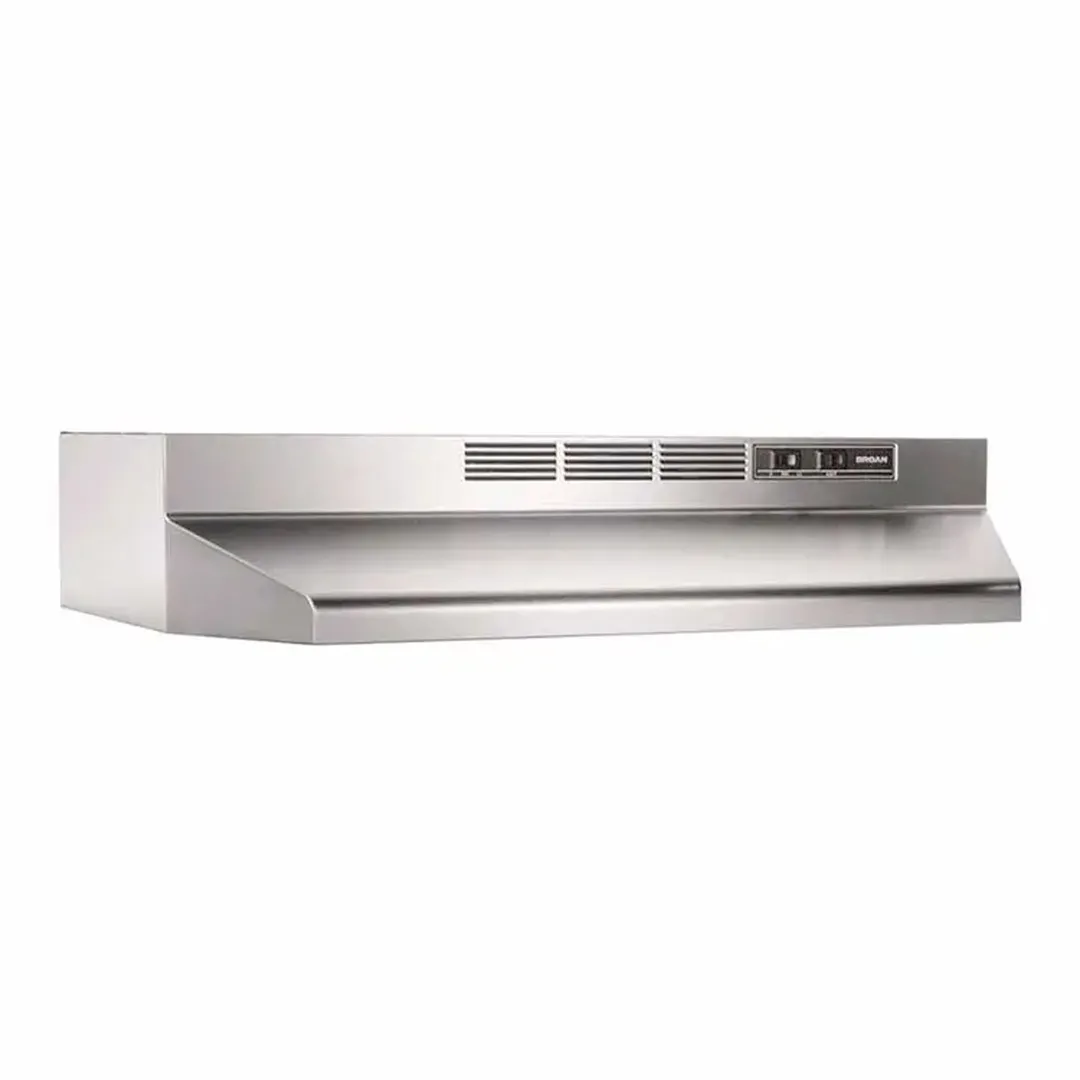
- Affordable
- Decent fan speed
- High-performing charcoal filters
- Stainless steel construction
- Replaceable underside light
- Not suitable for large, commercial-size kitchens
Overall, the Broan-NuTone 413004 is a highly attractive choice for small kitchens and infrequent cooks.
One important note before we begin: although this range hood is categorized as an “under-cabinet range hood,” you can also mount it on the wall using wall-mounting brackets.
Recirculating Fan & Charcoal Filter
Since this is a ductless range hood made for relatively small stovetops, it doesn’t need a lot of fan power. All it needs is just enough suction to draw the dirty air into and through the filter. So, don’t be too surprised that the CFM rating is low.
There are two fan speeds marked on the fan control switch: Low and High. Respectively, they produce 160 and 190 CFM.

The charcoal filter inside of the 413004 will eliminate a majority of contaminants, soot, and other dirty particles. Once the filter has done its job, clean air is expelled out of the unit through the grills at the front.
According to the manual, you need to replace the charcoal filter at least once a year. However, most customers find that the filter will begin to get saturated by debris and dirt in only three to six months. Check the filter regularly and replace it when necessary.
Mesh Filter
Aside from the charcoal filter, the 413004 range hood also contains an aluminum mesh filter. It will deal with all of the lingering grease particles in the air.
Unlike the charcoal filter, the aluminum mesh filter is washable and can be reused multiple times. It only needs replacement if it gets damaged.
Though the mesh filter is dishwasher-safe, like we mentioned earlier, we do not recommend washing aluminum in the dishwasher. You should always clean it by hand to avoid corrosion.
Wall-Mounting Kit
The Broan-NuTone 413004 is mainly intended as an under-cabinet range hood. But it is pretty easy to convert it into a wall unit using the company’s wall-mount kit.
This kit comes with two wall brackets. Attach them to the range hood via screw holes at the back of the unit, then bolt them onto your interior wall. They will hold the range hood aloft over the stovetop. Make sure the brackets are attached to solid mounting points in the wall — you don’t want the weight of the hood to tear out your drywall and fall down.
While you are installing the range hood, measure the installation height appropriately. Make sure that the range hood is no lower than 18 inches or higher than 20 inches above the stovetop. Otherwise, the range hood will lose efficiency.
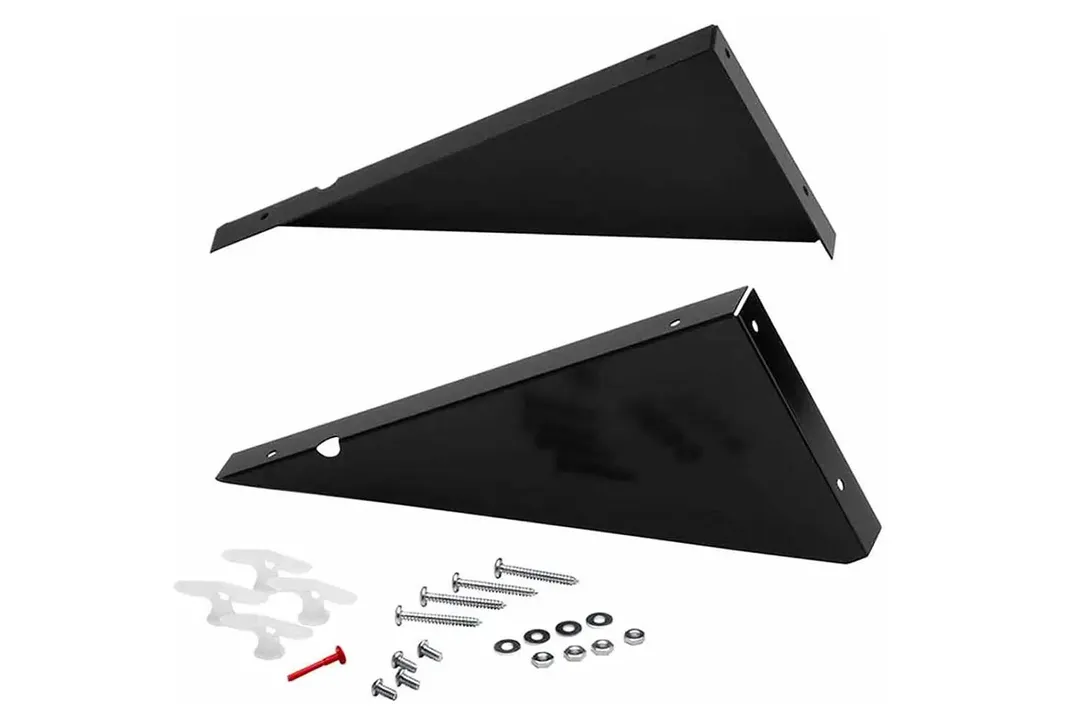
Underside Lighting
There is a lighting socket on the underside of the NuTone range hood. You can fit a 75W bulb in there. It will light the stovetop, making it easier and safer for you to work.
The bulb is not included, however. You can bundle up the bulb from the manufacturer as an optional accessory or purchase your own from the local hardware store. Fortunately, it is not a proprietary socket — it will accept any A19 bulb.
You can control the light through the rocker button on the control panel.
Verdict
As one of the more affordable kitchen ventilation systems out there, the Broan-NuTone 413004 is a great budget-friendly option.
Price at time of publish: $113.42
- Size: 21”/24”/30”/36”/42”
- Finish: Bisque/Black/Stainless Steel/White
- Material: Metal
- Filtering: Mesh Filters/Carbon Filter
- Venting: n/a
- Timer: No
- Max Airflow: n/a
- Speeds Settings: 2
- Lighting: 1 x 75 W (Incandescent)
3. Best 30-inch: Hauslane Chef Series 30” WM-538 Range Hood
From the polished stainless steel enclosure to the LCD touch-screen control, the Hauslane Chef WM-538 was obviously built for the premium market. Luxurious aesthetic aside, it also provides ventilation power in spades.
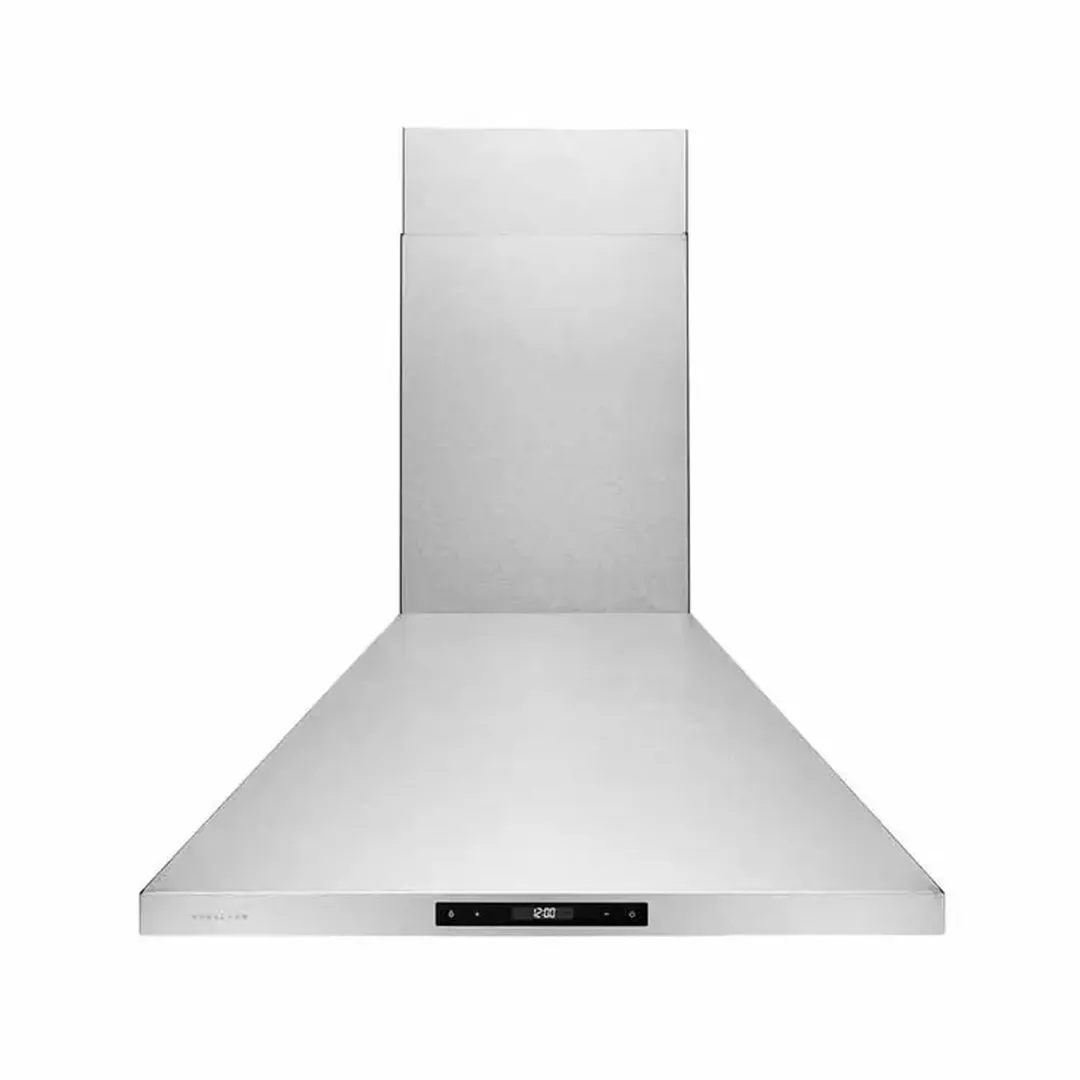
- High performance
- Premium build quality
- Touch-screen control panel
- Stainless steel construction
- Efficient stainless steel baffles
- Costly
- Stainless steel is prone to fingerprints
If you need something that looks just as good as it performs, the Hauslane Chef WM-538 range hood is worth considering.
Premium Build Quality & Aesthetic
The WM-538 comes in two sizes. You have the option of either a 30- or 36-inch-wide version.
It is built using high-quality stainless steel. Precision manufacturing gives the hood very sleek, angular lines. These sharp lines don’t just give the range hood an attractive aesthetic, but it will also help the WM-538 conform to the overall look of a modern kitchen.
So, aside from serving as a range hood, the WM-538 can also moonlight as kitchen décor.
One thing to note, however — despite the stainless steel enclosure looking very nice, it is very susceptible to fingerprints. Even the slightest touch will either leave a fingerprint or a smudge. If you want to keep it pretty, don’t touch it anywhere but the control panel and wipe it down regularly.
Powerful Performance
At the highest fan speed, the Hauslane Chef WM-538 can move about 860 CFM. This is enough ventilation strength to service an 86,000-BTU cooking range. That’s the equivalent of four 20,000-BTU stoves burning at the same time.
Interestingly, at its peak performance (860 CFM), the WM-538’s ventilation strength rivals that of commercial-size range hoods. For residential kitchens, the WM-538’s maximum fan speed is probably overkill.
As a result, most residential users will only ever need the lower fan speeds. The WM-538 has three fan speeds in total: Low, Medium, and Max. According to various comments from customers, the lowest speed is sufficient for most people. At this speed, the range hood also makes very little noise.
You can adjust the fan at any time to suit your needs via the touch-screen at the front of the unit.
Wall-Mount System
The Hauslane Chef WM-538 is a wall-mount range hood. It comes with all of the bracketing equipment that you need to tack the range hood to your wall, plus the chimney cover to keep it looking classy. There is also a 6-inch round transition piece to fit your round ventilation duct to the range hood.
If your kitchen has a high ceiling, consider getting Hauslane Chef’s extension kit. It can make the range hood work with a ceiling as high as 10 feet.

Stainless Steel Baffle Filter
To trap all of the grease from your cooking fumes, the Hauslane Chef WM-538 comes with stainless steel baffle filters. Unlike the aluminum baffle filters of the Z Line KB range hood, the stainless steel filters of the WM-538 are very durable. They are also slightly more effective at trapping grease.
Additionally, because stainless steel is impervious to detergent, you can wash the filters in the dishwasher. Maintenance is much simpler and less time-consuming as a result.
Control Panel & Underside Lighting
The control panel is arguably the most attractive design feature of the WM-538 range hood. There’s no buttons on the range hood at all. Everything operates by touch.
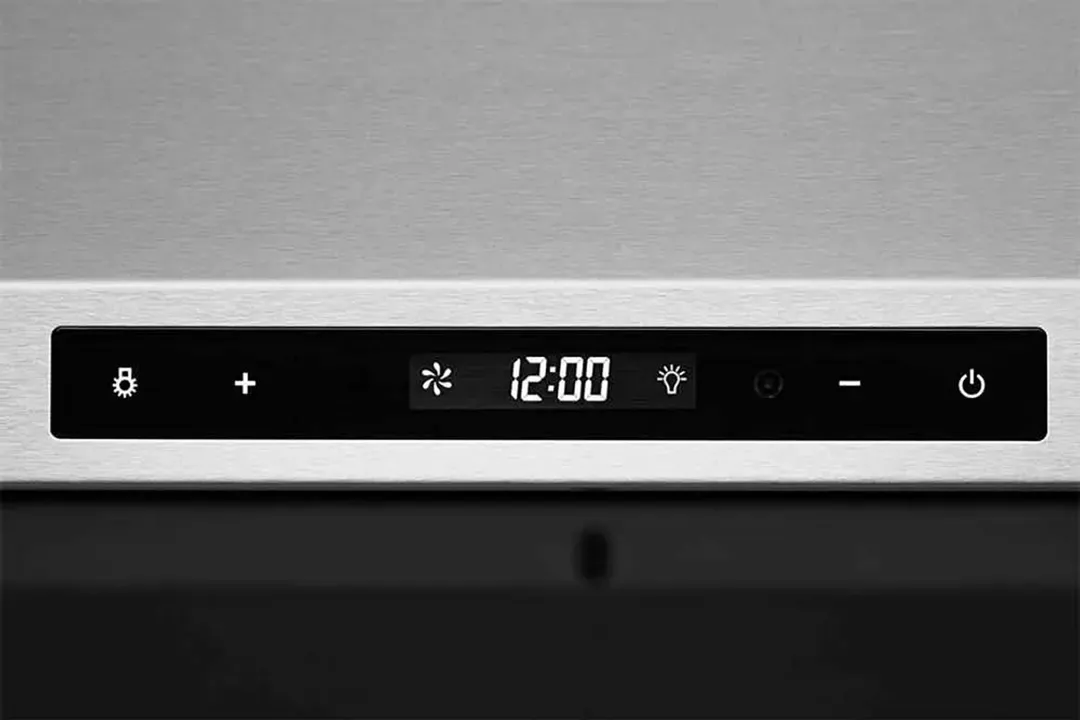
The touch-screen panel is positioned prominently at the front of the unit. A small LED display sits at the center of the panel. It is flanked by four capacitive touch buttons: the power button, two fan speed adjustment buttons (+/-), and a light switch.
Speaking of the light switch, it controls LED bulbs mounted at the bottom of the range hood. The complementary LED lights are warm-tone GU10 bulbs. They are replaceable, so if they wear out or you want a different color, you can switch them with any GU10 spotlight bulbs. Just ask the clerk at your local hardware store.
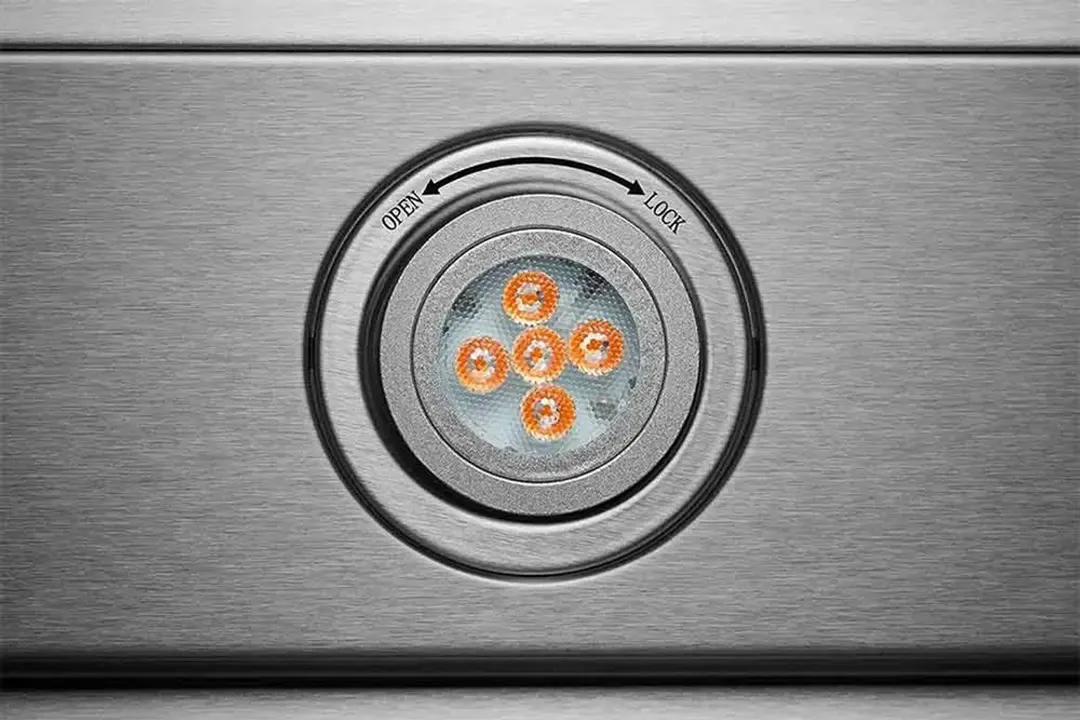
Verdict
If you are in need of a 30-inch range hood and aren’t limited by budget, the Hauslane Chef will be a very attractive option. Its excellent combination between performance and design is good justification for its price tag.
Price at time of publish: $302.11
Key specs:
- Size: 30”/36”
- Finish: Brushed Stainless Steel
- Material: Metal
- Filtering: Baffle Filters
- Venting: Top
- Timer: Yes
- Max Airflow: 860 CFM
- Speeds Settings: 3
- Lighting: 2 x 3 W (LED)
4. Best 36-inch: Cosmo COS-5MU36 36 in. Convertible Range Hood
In the 36-inch segment, the Cosmo COS-5MU36 is highly rated. After all, it has a lot of things going for it: great-looking design, high build quality, and decent performance. But the COS-5MU36’s best selling point is that it is very affordable for its size and all the features it offers.

- Relatively affordable
- High build quality
- Premium-looking, stainless steel design
- Decent performance
- Convertible
- Performance not suitable for large kitchens
- Stainless steel is prone to fingerprints
Excellent Build Quality
It’s quite surprising that this range hood is as inexpensive as it is, considering its build quality and overall aesthetic. The enclosure is made from high-grade stainless steel and has a luxurious brushed finish. It will definitely be able to improve the general look and feel of your kitchen.
Unfortunately, stainless steel is quite susceptible to fingerprints and smudges.
We don’t have much to complain about when it comes to build quality, either. The manufacturing is immaculate, as evidenced by the smoothly rounded front “bumper” of the unit which is executed very well.
Decent Performance
The Cosmo COS-5MU36 is a convertible range hood. Therefore, it can function as a ducted or ductless type. The ductless recirculation function doesn’t come standard. If you want it, you must purchase the optional charcoal filter kit.
Performance-wise, the COS-5MU36 doesn’t quite meet the high standards set by the more expensive options on this list. The range hood comes with a 3-speed fan motor. At the highest fan speed, it can produce about 200 CFM. The range hood will suit a 20,000-BTU cooking range.
As a result of its low performance, we only recommend this model for small kitchens.
Wall Mounting Kit & Duct Connector
This model is ordinarily supposed to be an under-cabinet range hood. Nonetheless, you can mount it onto your wall just fine.
Inside of the box, you will find two drywall anchors. Behind the range hood itself, you will also find two screw holes. Attach the anchors to the range hood via the two screw holes. You can then secure the unit onto the wall.
The COS-5MU36 has a 5-inch round duct connector. It does not come with a transition piece, so if your duct is a different size or shape, you need to purchase a fitting adapter.
Be advised that Cosmo does not sell any transition piece. You will have to search for a suitable third-party option.
Aluminum Mesh Filters
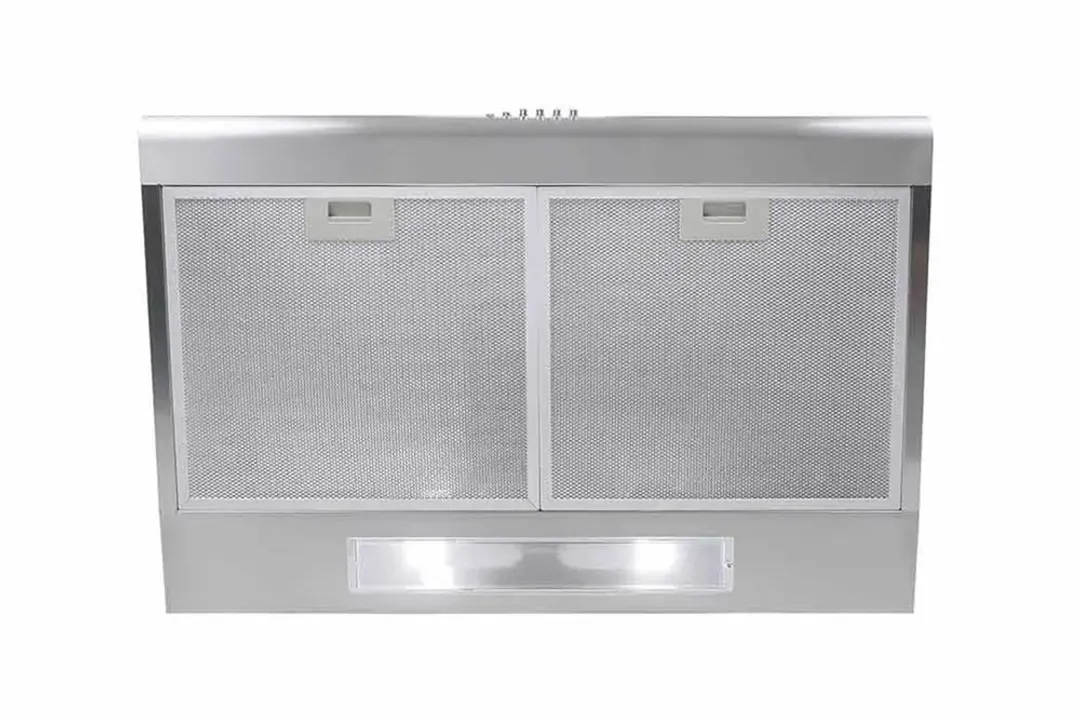
The range hood comes with aluminum mesh filters to trap grease. As always, although the filters are advertised to be dishwasher-safe, you should wash them by hand. Aluminum does not deal with dishwashers very well.
Verdict
This 36-inch range hood is best if you don’t have high ventilation demand. It will work in small residential kitchens that seldom have more than a single stove top on. Additionally, since it is quite affordable, the COSMO COS-5MU36 is compelling if you’re shopping on a budget.
Price at time of publish: $130.49
Key specs:
- Size: 30”/36”
- Finish: Stainless Steel
- Material: Metal
- Filtering: Mesh Filters/Carbon Filters
- Venting: Top/Rear
- Timer: No
- Max Airflow: n/a
- Speeds Settings: 2
- Lighting: 2 x 3 W (LED)
5. Quietest Wall-Mount: Winflo 30 in. Convertible Stainless Steel
Excessive noise is a very common problem when it comes to range hoods. Some people can tolerate the noise while others are more sensitive to the blower fan’s humming.
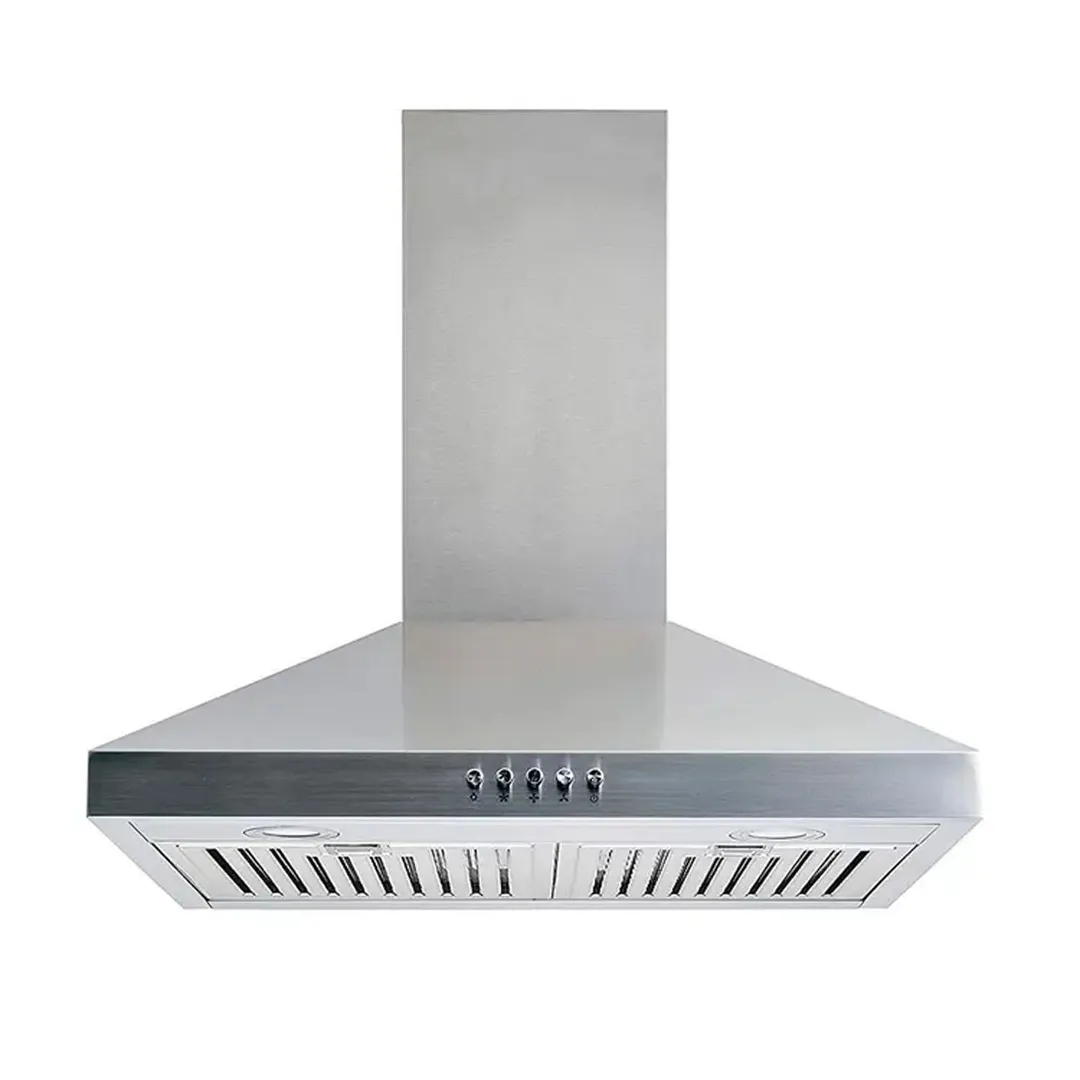
- Quiet operation
- Relatively affordable
- Good build quality
- Stainless steel construction
- User can choose between baffle or mesh filters
- Design is still fairly basic
If you identify as the latter, try the Winflo 30-inch convertible range hood. At the moment, it’s one of the quietest wall-mount range hoods out there.
Moderate and Quiet Performance
The Winflo 30-inch range hood has a 3-speed fan system. When tuned to the highest speed, the range hood has a ventilation strength of 350 CFM. It can handily service two 15,000-BTU stoves simultaneously.
Despite the decent suction performance, the range hood’s maximum noise level is only around 65 decibels. A normal conversation is around 60 decibels. The hum shouldn’t be too grating even if you’re sensitive to noise.
Because it is a convertible system, you can also install charcoal filters to give it the ability to run ductless. The unit doesn’t need a lot of airspeed during recirculation, so you should be able to use the lowest and quietest settings.
Simple Stainless Steel Design
The range hood is made from stainless steel. Although the design is rather basic, the Winflo range hood is still a beautiful piece of equipment.
At the front of the hood are five control buttons. You can power the fan on or off, control the fan speed, and toggle the underside lighting (two white LED bulbs). It is not as fancy as the touch-screen control of the Hauslane Chef range hood, but it does the job.
Mounting Hardware
All necessary mounting hardware is provided inside of the box. Besides the standard wall-mount brackets, you also get an adjustable chimney. It can telescope to fit ceiling heights between 7.5 to 8.5 feet. If your kitchen has a taller ceiling, the company also has an extension kit (model number: WRHCE03).
The range hood’s outlet collar accepts a round 6-inch duct.
Baffle and Mesh Filters
When you order the range hood, you will be given two options: mesh or baffle filters.
Winflo’s mesh filters are made from aluminum. Though they aren’t as sturdy or effective at trapping grease as baffles, they are inexpensive. If you are shopping on a budget or don’t usually cook greasy recipes, these mesh filters will do the trick.
On the other hand, you can also purchase Winflo’s stainless steel baffle filters when you order the hood. They’re more durable and can trap grease more effectively.
The issue is, of course, cost. Getting the baffle filters instead of the mesh filters will cost you an extra $30. However, if you regularly cook greasy food, the extra investment will be worthwhile.
Verdict
You will appreciate the Winflo’s quiet operation if you are sensitive to continuous, loud noises. Thankfully, aside from quiet operation, the range hood also has fairly decent performance to boot. It will work well in most kitchen types and sizes.
The range hood isn’t too expensive, so budget-wise, it is still considered accessible for most customers.
Price at time of publish: $210.43
Key specs:
- Size: 30”
- Finish: Stainless Steel
- Material: Metal
- Filtering: Baffle Filters/Mesh Filters/Carbon Filters
- Venting: Top
- Timer: No
- Max Airflow: 284 CFM
- Speeds Settings: 3
- Lighting: 2 x 3 W (LED)
The Best Wall-Mount Range Hoods: What Are They?
A wall-mount range hood is a ventilation system that is affixed to your kitchen’s interior wall and sits above the stovetop.
It is different from an island range hood or an under-cabinet range hood. The former is suspended from the ceiling in the middle of the room. Meanwhile, the latter takes up a kitchen cabinet that overhangs your stovetop.
The advantage of a wall-mount range hood is its sheer ventilation power. It is usually more powerful than the other two types.
A wall-mount range hood doesn’t just suck out all of the smoke and off-gases, though. It can also eliminate odor and reduce the humidity level inside your kitchen.
Wall-mount range hoods are also flexible when it comes to venting options. For example, an island range hood must be vented through the ceiling. But if you decide to go for a wall mount, it can either be vented through the ceiling or through an exterior wall.
There is a catch, however. Because of their large size, wall-mount range hoods are typically not well suited for small kitchens. It can take up precious space on the wall that could have been dedicated to a cabinet.
Things to Know Before Buying a Wall-Mount Range Hood
Before throwing down your money, there are a few crucial things that you should keep in mind.
Size (Effective Range)
The size, or occasionally also referred to as “effective range,” is simply the width of the range hood. The wider it is, the more gas it can capture.
When you purchase a range hood, make sure that it is about the same size or a tad bigger than your stovetop.
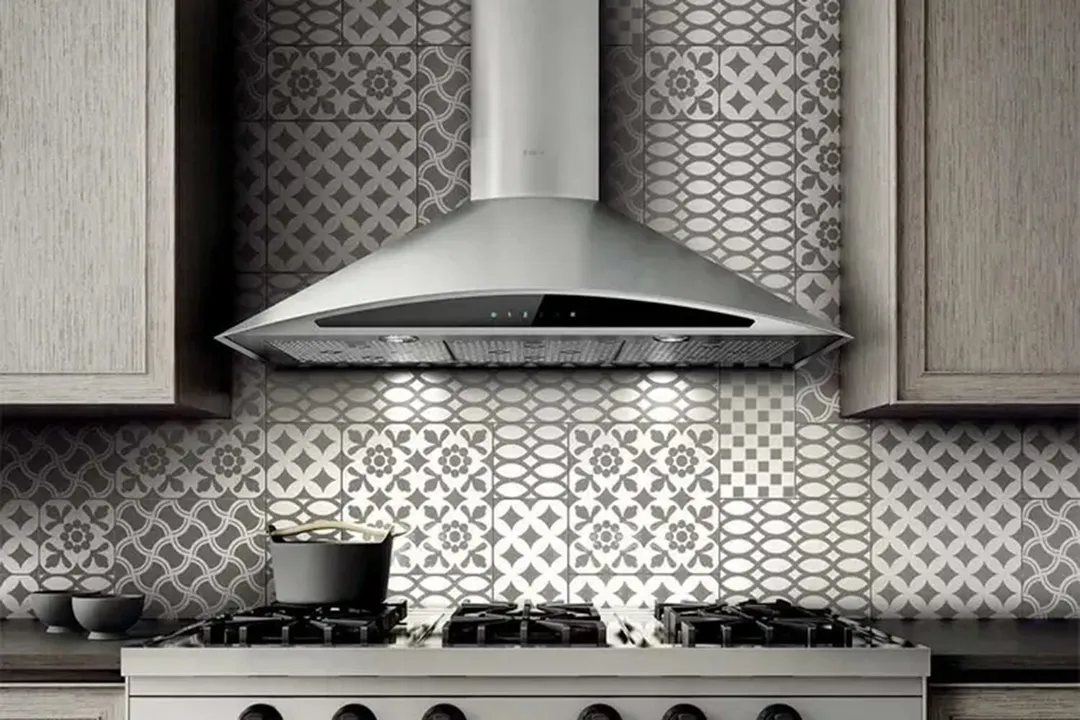
For example, if you have a 30-inch cooking range, make sure that your hood’s width is no less than 30 inches. If your range hood is too small, it may not be able to capture all of the gases that your stove produces.
Most residential cooking ranges and stovetops measure around 30 to 36 inches. Smaller kitchens may make use of a compact 24-inch range. Measure your range carefully before ordering your range hood.
Ducted vs. Ductless vs. Convertible
The next thing to consider is whether you want a ducted, ductless, or a convertible range hood.
Ducted Range Hood
A ducted range hood is most likely the first thing you think of when “range hood” is mentioned. This version is attached to a ventilation duct connected to the outside. With the help of a fan, gases inside of the kitchen are sucked up, led through the duct, and jettisoned outside.
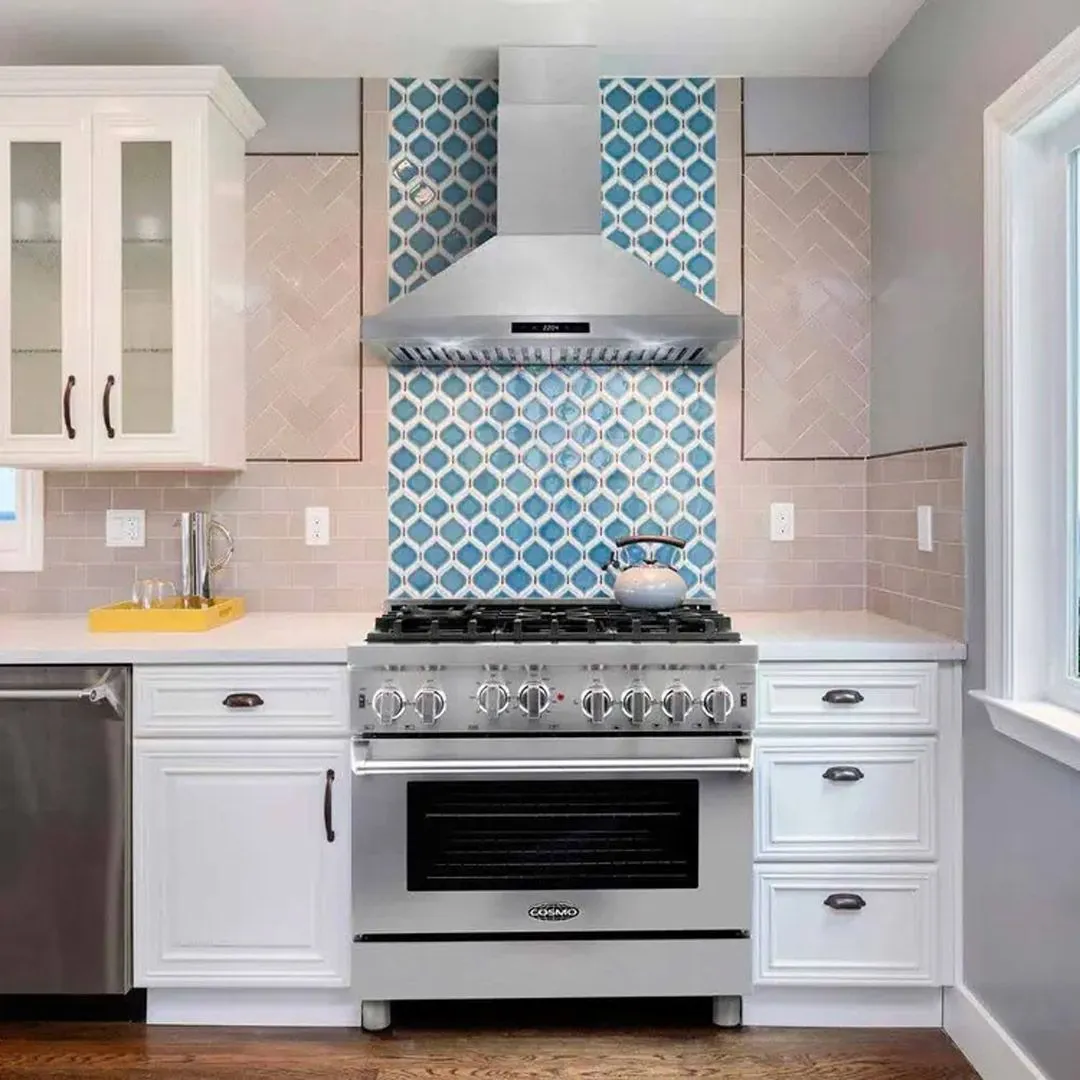
Though these systems perform well, the complicated installation process is a big wrench in the works. Your ducted hood has to be installed in a place with access to the house’s ventilation duct. If you don’t have a ventilation system, then you must install one in your home.
Building a ventilation system is a costly, labor-intensive, and time-consuming venture. Also, because the length of a ventilation duct must usually be kept below 30 feet, you cannot just position the duct anywhere. That, in turn, also limits the places where you can put your range hood.
Because installing a ventilation system (if you don’t have one yet) is a big commitment, think over it carefully.
Ductless Range Hood
If a ducted range hood seems too much trouble to you, a ductless range hood is an excellent (and the only) alternative. Ductless range hoods are fairly cheap and aren’t as complicated to install as ducted versions. Like the name suggests, these don’t need a ducting system at all.
The way it works is that instead of sucking up the waste gases and venting them outside, the ductless range hood just recirculates the air.
It does this using a series of filters packed inside. The filters trap most of the dirty substances and noxious gases that flow through. On the other side of the range hood, clean air is released and recirculated back into the kitchen.
Certainly, this means that the air inside the kitchen won’t be as fresh as when it is serviced by a ducted range hood. However, if you have a small family kitchen that you only use for an hour or two every day, this shouldn’t be much of an issue.
The filters inside the range hood require maintenance and replacement. So, you will have to pay for upkeep throughout the device’s service life.
Convertible Range Hood
A convertible range hood is capable of acting as either a ducted or ductless range hood. It is connected to a ventilation system for outdoor venting. However, whenever you need, you can shut the vent and switch to using recirculation filters.
While it is certainly useful and you get the best of both worlds, this type is quite costly.
Filter
While shopping for a range hood, consider the different types of filters they come with. Note that all kinds of range hoods come with filters — it’s not just the ductless ones.
Currently, there are three popular types: stainless steel baffles, stainless steel/aluminum mesh, or charcoal filters.
Baffles and Mesh
These two are collectively referred to as “permanent filters.” They do not need replacing and instead, you only have to clean them every once in a while.
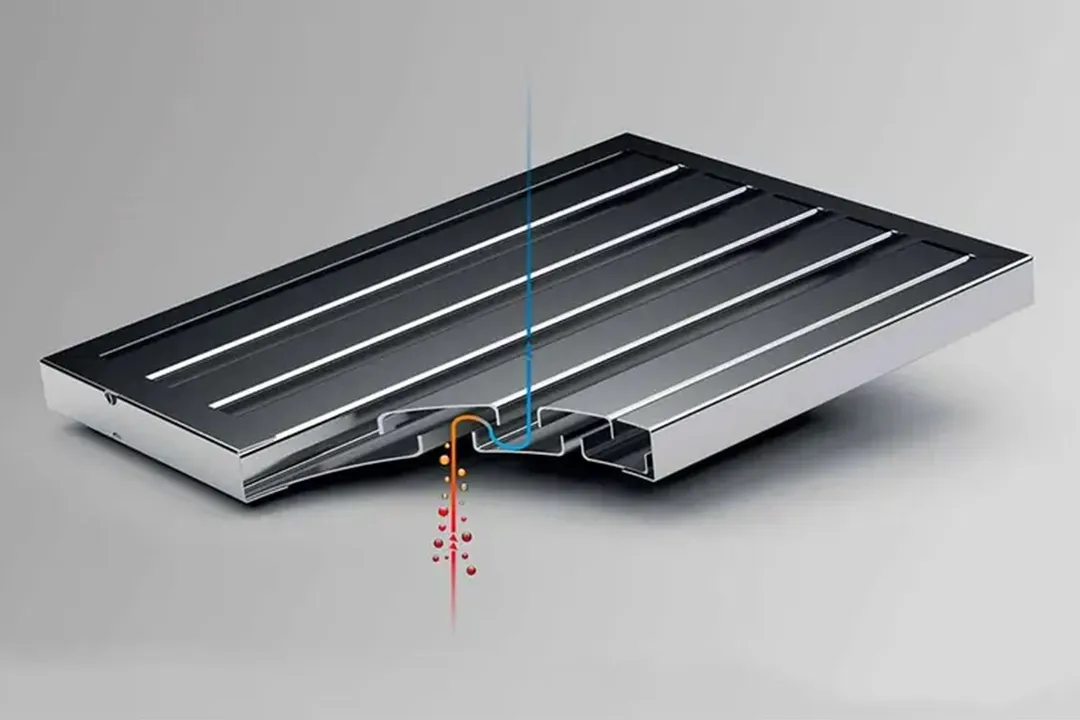
Baffle filters are often found inside of ducted range hoods. In reality, they are far more “baffle” than “filter.” They are mostly there to stop grease splatter, so this style will be most useful if you often cook greasy food.
The component is made up of a series of interlocking baffles. They are arranged together so as to form a serpentine route for the air to travel.
When air passes through the filter, it is redirected downward by the top baffles. During the process, all of the grease, dirt, and other heavy particles in the airflow condense or otherwise drop out of the air current. They accumulate at the bottom canopy casings, which are specially designed to function like grease traps.

Mesh filters are more affordable variations of baffle filters. These can trap grease, debris, soot, and other contaminants by forcing them through layers of metallic mesh. Though they work pretty well and are affordable, cleaning can be an issue. You have to deep-clean the meshes in order to purge all of the grease stuck inside.
Mesh filters can either be made from stainless steel or aluminum. Although stainless steel filters are a little bit more expensive, they last much longer and are generally more efficient.
Charcoal Filters
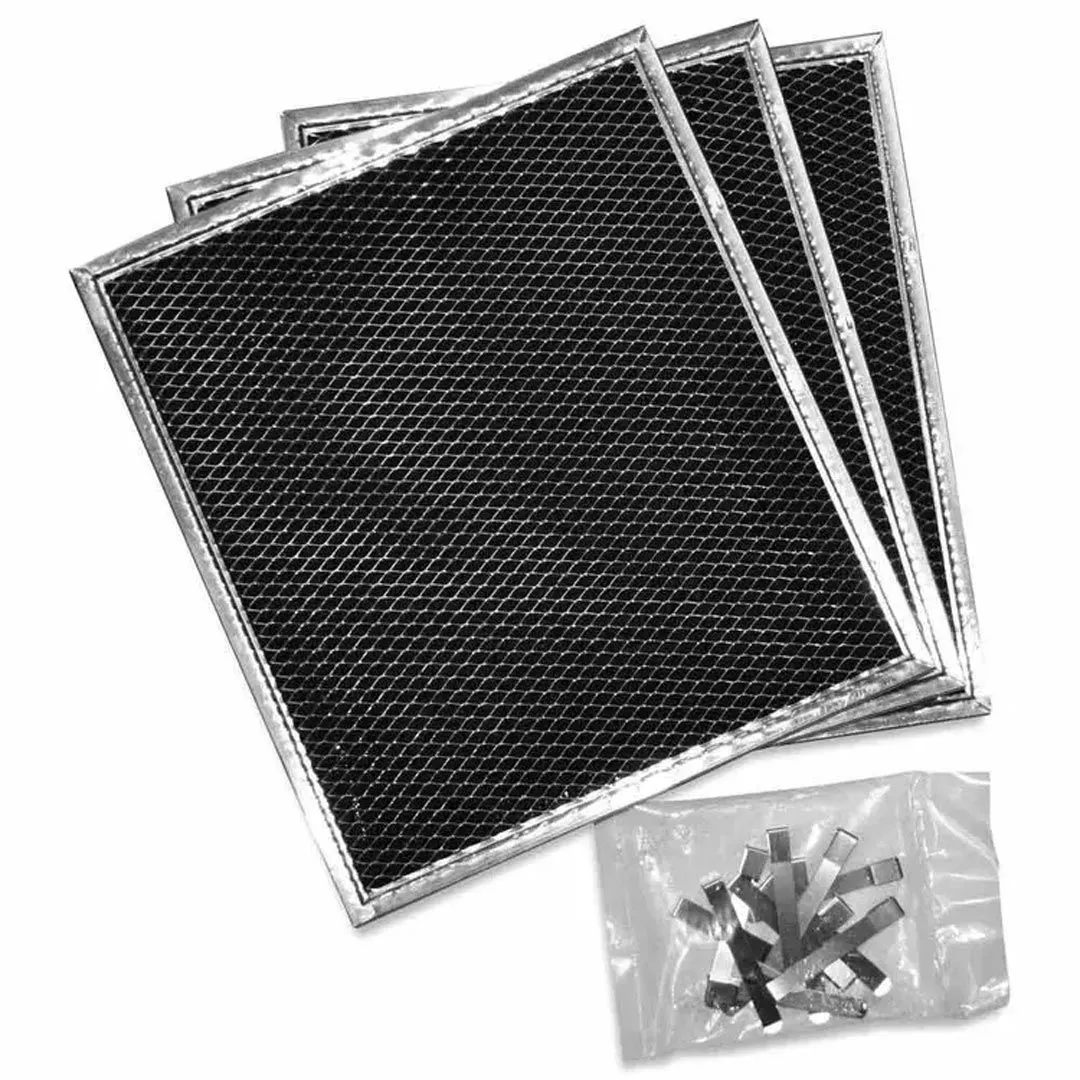
Ductless range hoods use charcoal filters. The charcoal is highly reactive and will bond to just about anything that passes through it. This includes debris, soot, grease, and other particles.
Charcoal filters usually need to be replaced two or three times a year. It depends on how frequently you cook and what kind of recipes you prepare. If you cook food with a lot of grease, the filters are going to get saturated much quicker.
Ventilation Strength
Ventilation strength is another term for the performance of your range hood. In other words, it simply means how much gas your unit can vent at a time.
Typically, a range hood’s ventilation strength is measured in cubic feet per minute (CFM). This number is then compared against your cooking range’s heating capacity (measured in BTUs, or British Thermal Units).
The basic calculus is that every 100 BTUs worth of output from your cooktop requires 1 CFM worth of ventilation. So, as an example, if you have a 40,000-BTU cooking range, you need a range hood with at least 400 CFM in venting strength.
How to Install a Wall-Mount Range Hood
Installing a wall-mount range hood is tough, time-consuming work. But considering the ventilation performance it offers, all that effort will pay off down the line.
This short guide is for ducted range hoods. Additionally, for our purposes here, we will assume that your house already has a ventilation system up and running. If you don’t, consult with a contractor to get one set up.
Survey the Location
Like we mentioned earlier in the article, a wall-mount range hood requires very precise positioning. It has to be in a place where the ductwork can easily reach and attach to both the ventilation ducting and the range hood’s outlet collar. The hood also has to be at an optimal height to capture all of the cooking fumes.
Typically, the ideal height is between 24 and 36 inches above the stovetop. However, optimal heights vary from one range hood to another. Check the user manual for the manufacturer’s recommendation.
Scout out the suitable section of the wall in your kitchen. If you have a cabinet above the cooking range, you will have to remove it to make way for the range hood (or use an under-cabinet hood).
Mark the Wall
When you have found the perfect location for your range hood, use a pencil to outline the spot on the wall. Also mark the spots for the screw holes.
Fasten the Range Hood to the Wall
Once the screw holes are marked, drill on top of the mark and into the wall. Drill fully in if your wall is simply drywall. However, if it is tiled, use nails and a hammer to punch small holes onto the tiles. This way, the tiles won’t be damaged when you install the brackets.
Insert wall anchors into the holes.
The range hood will also come with a wall-mount bracket. Install the bracket onto the back of the hood.
Place the range hood against the wall (you will need a helper for this). Align the bracket carefully with all of the drill holes and anchors. Secure the bracket onto the wall using the screws provided by the manufacturer.
When the bracket is firmly anchored down, the range hood will be solidly mounted to your wall. You can let go of it. Check the solidity with some tugs and shakes (but don’t put too much weight on it). The range hood shouldn’t wobble or jiggle.
Install the Duct
Now it’s time to connect the duct to the range hood’s outlet collar.
Most range hoods these days come with a flexible duct. Though these are cheap and easy to install, they are not durable or efficient, and they tend to be relatively noisy. Most professionals will warn you against using this type of ducting. Instead, they will point you toward rigid metal ducting.
Connect the duct to the range hood’s outlet collar. Then, secure the duct in place using HVAC aluminum foil tape. Do not use plastic zip ties or electrician’s black tape. They will melt.
Install the Chimney
Most wall-mount range hoods will have two chimney sections: a lower chimney and an upper chimney. Together, they shield the sensitive duct from the environment and also make it look more finished.
The two parts typically fit into one another such that they can telescope in and out. This allows you to make height adjustments so that the chimney will perfectly fit your ceiling.
The first piece to install is the lower chimney. All you have to do is to screw it to the range hood (screws are usually provided).
Once the lower chimney is in place, you can secure the chimney to the wall. Do not extend it all the way up to the ceiling yet, though. You will still need access to the duct inside.
On the upper chimney are screw holes. Use a pencil to mark the position of these holes and drill into the wall at the marks.
Insert drywall anchors into the drilled holes. It’s not yet time for you to secure the upper chimney so leave it as it is for now.
Connect the Ductwork to the Vent
Lead the duct attached to the range hood to the vent port of your ventilation system. You can fasten the two together using HVAC aluminum foil tape.
Like we said earlier, this all presumes that you already have a ventilation system in place. The procedure is going to be different if you don’t yet have a functioning ventilation ducting system.
Extend the Upper Chimney
Now that the ducting is finished, you can extend the upper chimney all the way up to the ceiling and secure it. The anchors are already in place from an earlier step. All you have to do now is to align the mounting bracket with the screws and fasten them.
Wiring and Installing the Filter
Wire the range hood’s electrical system. Make sure that the kitchen’s power circuit is off while you’re fiddling with the electric cables. You can usually find wiring diagrams in the user/installation manual.
When the wiring is finished, plug the system in and install the mesh or baffle filters. If you have a convertible system and intend to use charcoal filters, insert those as well.
Conclusion
Having the best wall-mount range hood in the kitchen will make the space substantially healthier and more hygienic to work in. Though they’re complicated and expensive, the benefits they provide are well worth the cost, effort, and time.
About your guide
Luna Regina is an accomplished writer and author who dedicates her career to empowering home cooks and making cooking effortless for everyone. She is the founder of HealthyKitchen101.com and HealthyRecipes101.com, where she works with her team to develop easy, nutritious recipes and help aspiring cooks choose the right kitchen appliances.
